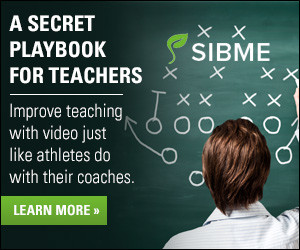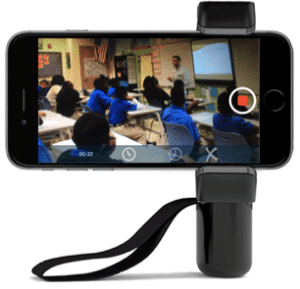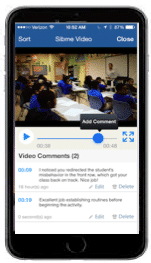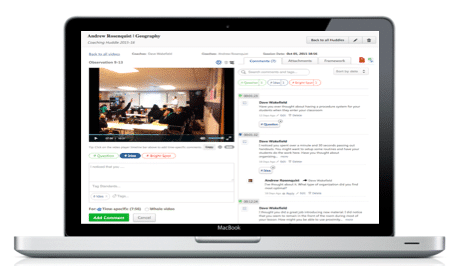Educators Can Learn From Athletic Coaches
Picture a room filled with 23 education majors preparing to watch their first peer deliver a 10-minute “mini-lesson” on a writing-related TEK. Today they all watch and learn from Jay who volunteered to present her lesson first and a week ahead of her peers. In the next weeks, today’s 23 observers will be teaching their own TEKS-related mini-lessons as well.
Interestingly, not only has Jay volunteered to deliver her lesson first (yes, there were incentives!) but she has also agreed to have her lesson filmed, uploaded, and stored to the class “huddle” where 23 of her classmates can go to watch her lesson from the comfort of their own computers or mobile devices as many times as they like in preparation for their own lessons.
Lights, Camera, Action
Using Jay’s smartphone and the Sibme mobile app a volunteer films the lesson. When recording stops, the video is uploaded automatically, processed, and stored to her private workspace within her account. From there, Jay copies the video to the class “huddle” where I (and her classmates) can access it anytime, anywhere, and from any device.
Reviewing the Game Tape
With access to Jay’s video in the class huddle, I prepare to “debrief” the lesson—immediately after it happened. After all, the idea of reviewing game tape is not a new one. Athletic coaches have been doing this with their teams for years. It turns out, players—and students—can learn a lot from immediate and specific feedback!
I start to play the video, stopping it every 30 seconds or so to comment on Jay’s withitness:
- “Let’s review how Jay gets our attention to start the lesson”
- “What does Jay do here in the video to make her transition work?”
- “What is the value of having students come to the board to write their answers?”
- “Why is it helpful for Jay to walk around the room during guided practice?”
- “Look at how patiently Jay waits here for the student to respond—how many seconds would you say she waits?”
Teaching is Clarifying
Teaching is really about clarifying student understanding. With the video to review, I have the opportunity to clarify, reinforce, and improve on every student’s understanding of the lesson cycle, lesson design, the teaching process, and the learning process. The abstract concepts of the art and science of teaching become concrete.
Giving Better Feedback
Although it would be ideal, I don’t have time to review the “game film” after every student lesson that is taught with the entire class, so there is another way that Sibme allows me to give better feedback.
When I am ready to view, evaluate, and give feedback on the taped lesson, I can make use of Sibme’s Time Stamps. Using my mouse, I can click on the progress bar below the video to make time-specific comments that will appear in a dialogue box next to the video. As the student reads my comments, she can quickly reference a marker indicating the exact moment that I am referring to within the lesson. I can also make “whole video” comments that will also appear in a dialogue box. Finally, I can easily attach a resource for the student to access if they need a bit more guidance about how to use a technique like “Wait Time.” This feature allows me to customize and differentiate instruction that is tailored to each future teacher.
When You Are Through Changing, You Are Through
So, how has Sibme changed my classroom?
| Last Year | This Year |
| · Students delivered their mini-lesson and afterward, I discussed some of the highlights from each lesson | · Students delivered their mini-lessons, and I selected one from each class period to feature using Sibme. We watched the “game film” and I gave specific and immediate feedback |
| · After each mini-lesson was taught, classmates had access to the lesson plan document on Blackboard | · After each mini-lesson was taught, students had access to the video of the lesson along with the lesson plan document |
| · I used a rubric to evaluate each lesson and wrote “comments for growth” regarding each lesson | · For the lessons that were not discussed as “game film,” I made time-stamped comments using the Sibme tool. The comments were “tagged” to features on the rubric |
Allyson Burnett M.Ed.
Allyson is a highly experienced grades 6-12 teacher, author, national presenter, and consultant specializing in showing teachers how to build the skills their students will need to meet the challenges of the Common Core State Standards. As co-author of the recently published 20 Literacy Strategies for Meeting the Common Core, Allyson has a wealth of knowledge about the most effective tools teachers can use to “show students how” to read and write with a purpose to get college and career ready.





